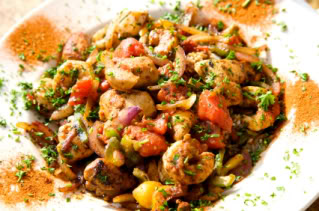Gluten, derived from the Latin term 'gluten', denoting 'glue', is a compound comprising of a prolamin protein known as gliadin and a glutelin protein known as glutenin that is conjoined with starch in the endosperm (the nutritive substance in the seeds of flowering plants) of an assortment of grains and plants belonging to the grass species. Gliadin is a substance that is water-soluble, while glutenin is a substance that is not water-soluble. Together these substances constitute approximately eighty percent of the protein that is present in a wheat seed. Being insoluble in water, wheat seeds can be purified by washing away the starch.
The seeds of most flowering plants have endosperms that are storehouses of proteins used to nourish embryonic plants during germination. Furthermore, "true gluten" is only found in certain members of the grass family, such as wheat. Occasionally, the proteins accumulated in corn and rice are also referred to as gluten. However, the glutenous proteins that are present in corn and rice differ from the glutenous proteins present in wheat, as they do not contain gliadin and therefore are not defined as "true gluten".
"True Gluten" is present in a wide variety of foods. It is known for the elasticity it gives to dough and the chewy texture it delivers in baked goods. Gluten is used as a worldwide source of protein that is most commonly found in foods prepared directly from sources containing it such as wheat, barley and rye. It is also used as an additive to foods for various purposes. Gluten may also be found in cosmetics and dermatological preparations.
Did you know that wheatgrass is gluten free?

































